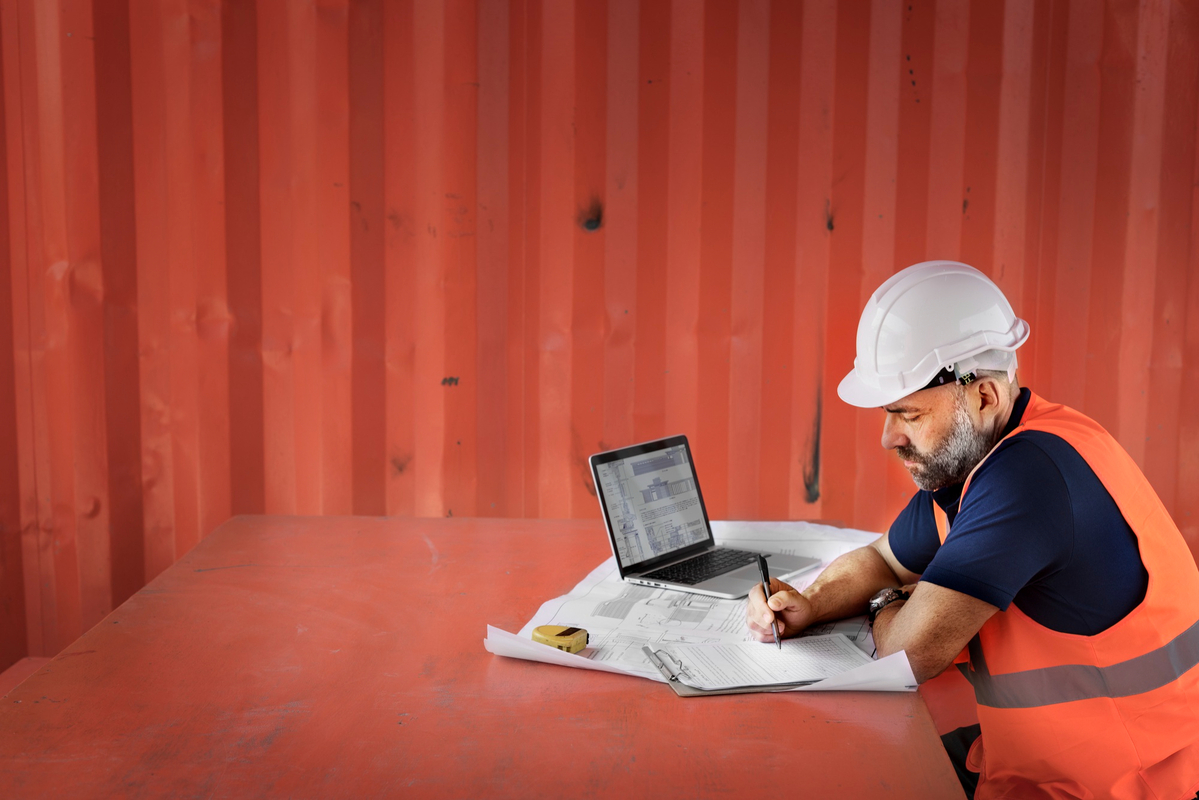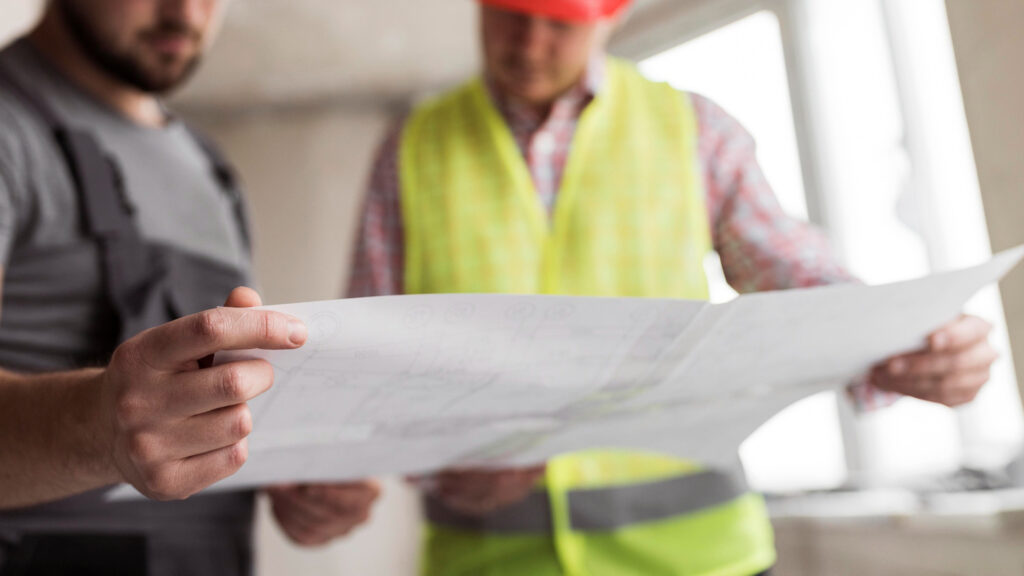Exclusive Neuroject Article: Contractors must adhere to the correct practices on the job site to stay secure and productive. Construction checklists ensure that no essential processes are skipped. Project management in the construction industry can be challenging. You will be able to move things about and make changes for better outcomes if you have a thorough checklist for your construction job.
Any checklist’s structure and content are closely related to the project in question. Use professional construction scheduling software or a checkmarked piece of paper to accomplish this. In either case, this checklist should be an essential component of your construction environment because it will guarantee the flow of events and reveal potential problems.
For quality assurance, safety audits, punch lists, and other purposes, checklists are fantastic for construction teams. However, making construction checklists and keeping them structured, though, can be a real pain. For this purpose, to learn about this issue, in this article, we will review the most important construction checklists in 2024.
Table of Contents
What is a Construction Project Checklist?
Contractors utilize construction checklists to walk through the many stages of a construction process. Construction checklists are a wonderful tool for streamlining processes, enhancing documentation, and enforcing safety and quality standards since they follow an established, regulated protocol.
As they proceed through a process, they cross off each action item from the related checklist when it is finished, or they make a notation when a problem stops them from doing that task. The completed checklist is then signed, recorded, and kept with daily reports and other project data for easy access. Contractors use checklists for construction projects to guide them through the various processes. While some construction firms utilize digital solutions that can be used on a PC or mobile device, others prefer to employ checklists on paper and pen.

Who Uses a Construction Checklist?
Teams in the field and the office employ checklists. Contractors will complete checklists on the job while they keep an eye out for potential safety hazards or evaluate the finished product for issues with quality. A safety manager would often assign checklists to particular employees based on scheduled tasks depending on the size of your team.
Operations managers and other stakeholders may use checklists when executing various management procedures in the office. When evaluating the status of a project or determining the root of an issue, they could also need to look over the construction checklist that was provided by the construction team.

What Makes a Construction Checklist Important?
Checklists are crucial in the construction industry because they support organizations in maintaining high levels of quality and safety. Using checklists is another simple method for lowering risks and enhancing documentation procedures.
Improved Safety
Improved safety is the key advantage of the construction checklist. Even though toolbox discussions and regular training help keep safety top of mind, it might be challenging to remember every rule on the spot without the aid of a checklist. Even if they do recall the guidelines, employees could get lazy on a busy construction site. When stressed for time, they can forego lengthy inspections or monitoring responsibilities. Checklists serve as a gentle reminder to employees to adhere to safety protocols to avoid mishaps and injuries.
Improved Quality
Similar to the advantages that improve safety, using a construction checklist helps businesses avoid quality and construction-related difficulties. Employees can spot quality issues early by employing checklists, and they can rectify them before they become bigger, more costly blunders. A construction checklist, which reinforces standards, aids personnel in remembering what to look for when doing quality inspections.
Suggested article for reading: 10 Tips For Quality Control in Construction
Improved Documentation
Construction checklists increase employee accountability and support attempts to report daily information. It is simple to keep track of when inspections and other important activities were accomplished when construction checklists are included in the reporting process. You can use the checklist to quickly determine the issue’s root cause and find a solution in the event of a dispute.

Significant Advantages of Using a Construction Checklist
It can be challenging to incorporate a construction checklist into an ongoing project. However, accountability and record-keeping become more effective once they are integrated into your building workflow. In certain circumstances, checklists can even find issues that no one thought to search for.
So, what are the advantages of a normal construction project checklist then?
1. Getting Your Team Together
It’s crucial to check that your team members are ready to go when needed and that they are all informed of what has to be done for the project. This should be done as soon as you get them all assembled. When you have a clearer sense of who will be doing what and when we advise writing their names on your task list and ticking them off as they finish their part.
With no need to stop and ask too many questions along the way, everyone will be able to get through each stage without any problems. Since everyone is aware of what they should be doing at that precise moment, confusion is also reduced.

2. Establishing the Goal at the Outset
Working on a construction project makes it simple to forget things. In every phase of any project, planning is crucial. To ensure that nothing slips through the gaps in your preparation, use a construction checklist. This will ensure that everyone involved is aware of your expectations at all times. When safety is an issue, construction checklists are a particularly helpful tool since they give precise instructions and help avoid any ambiguity about what needs to be done and when.
Make checklists that cover each step of successful management from start to finish to add to your collection of top-notch construction management tools. Before beginning any new task, you should print and complete these forms. It becomes simpler to recall what has to be done—and who should do it—at each stage from that point on.
3. Recognize When to Take Action
Following a strategy and being aware of when to take action is crucial when managing a construction project. Your construction checklist is your road map, directing you through each stage of your construction or remodeling project and ensuring that every area of concern is taken care of.
When one phase is over and a new one begins, just replace all of your old checklists with fresh ones from our professionally produced guide. You won’t forget anything along the route thanks to these checklists. Create more effective projects by creating customized task lists for each stage of your workflow!

4. Establishing Priorities
It’s time to set priorities once you’ve engaged your team. You can monitor each stage of the process and keep track of everything that needs to be done to create this building efficiently and swiftly by using a construction checklist. Additionally, it makes sure that everyone is promptly informed if something slips through the cracks.
5. Maintaining a Focus on the Successful Completion
Use a construction checklist for projects to keep your focus on finishing each stage of the project successfully. Create a thorough checklist that you can use repeatedly to ensure that every task is finished on time and according to schedule. This way, you won’t have to start from scratch each time you embark on a new project.
The Various Applications of a Construction Checklist
Construction checklists may be used in a variety of ways, and getting the most out of them can assist not only your current project but also all of your future building projects and all of your standardized construction activities. You can create a construction checklist that covers all the steps at every stage of the building process, from preliminary planning through design to project closeout and perhaps even facilities management.
The specific elements that must be taken into account for each stage of the project determine the content of your building checklist. As a result, when creating the checklist you want, you really need to be precise. In order for you to understand the extremely practical, real-life applicability, we have included a few specific scenarios where you could use a construction checklist:
- Construction checklists are a very useful tool for establishing safety precautions and protocols in place. They are very helpful for workers to follow safety and health regulations in order to avoid accidents, fatalities, and injuries at the building site.
- Checklists for construction projects are excellent instruments for routinely inspecting tools and equipment.
- For all the raw materials you require, together with their seller or source, you can create a construction checklist. Using this construction list, you can identify the materials, tools, and equipment you’ll need for every stage of your project, including the ones you already have and the ones you still need to order.
- With time tables defining projected output on specific dates, you can design a construction checklist around the duration of the project. Include specific dates to help you create effective processes as you work toward your intended goals and outcomes.
- You can also include a construction checklist that enumerates all the steps that must be taken to finish your building job. The details of your project’s phases, from planning to development to evaluation, would be well-described by this checklist. Another building checklist that is solely focused on upgrading procedures that have already been put in place might be included to get the most out of it in terms of efficiency.
- A separate building checklist with a list of all your suppliers is then possible. This can include the vendors you already work with and those you believe have the potential to meet your future needs.
- For the requirements of your construction project’s new workforce employee orientation, you can use a construction checklist. You can get a general idea of your new hires’ skills, tasks and responsibilities, and progress on your orientation guide by using this building checklist. This makes it simple for you to assign tasks to people in accordance with their abilities and monitor their progress.
Tips for Developing a Construction Checklist
The construction industry is made simpler by having a good document or construction management solution that outlines your construction schedules and their key components. Your construction project’s success—or failure will depend on how effectively you manage the project and how well you follow your construction checklists. To create usable construction checklists, here are some things that might come in handy:
1. Use a Template
There are templates for construction checklists, and many of them are available for free download and usage. These templates can provide you with a very useful foundation for your checklists, and they frequently fill in any gaps you would have missed if you had started from scratch. It’s crucial to remember, nevertheless, that your checklists should be customized for the particular requirements and working methods of your business. So, instead of using a template as the final product, utilize it as a beginning point.
2. Make a Digital Checklist
Everything in the modern world is digital. That has to incorporate all checklists related to your construction procedures. Why? even though paper copies can be problematic. If you misinterpret someone’s handwriting or lose the hard copy, you won’t know what has been finished and what has not. You don’t have to be concerned about things like that while using digital checklists.

3. Make It Unique to Your Requirements
Apply each stage of the template you’ve chosen to the way your processes are now set up as you go through it. List all the elements the template is lacking. When you’re finished, go back and put all the elements that are missing in the correct locations in the template. By doing this, you can truly make your construction checklists work for you.
4. Review Examples
As part of their marketing techniques, a lot of blogs and building companies have posted their online checklists for various operations. You may and should make use of this opportunity. Look at as many instances of construction checklists as you can, not just the ones that would be ideal for your company. You can learn what not to include in your final checklists by using checklists that would never be appropriate for your purposes.

5. Ensure Checklist Contents are Up to Date
A schedule for revising your construction checklist should be established. You’ll notice that your procedures frequently go through slight modifications if you give them any thought. Your checklists must be updated each time there is a change to avoid losing anything in the confusion.
What to Include in a Construction Checklist?
Are you prepared to start developing checklists for your business, including pre-construction and scope of work checklists for construction projects? Ensure the following is included in the construction checklist:
- Success Metrics: What does success look like for each item on your checklist? Make sure that is clearly defined in the documentation surrounding all of these processes.
- Schedules: Without deadlines, a checklist is not very persuasive. To keep things on track, deadlines must be assigned to each task and subtask.
- Detailed Budget: One of the biggest checklist items that routinely gets left off of checklists for construction is the budget. Supervisors need to know what they’re working with in terms of budget as they complete any given checklist. Make sure that information is readily available.
- Site Safety Plans: Every aspect of construction must be safe. Therefore, a checklist must also include a specific safety plan or reference if it mentions any duties that could endanger an employee in any way.
- Communication Plans: Define in each checklist who needs to know when it is completed or when there are problems or delays.
- Work Organization Breakdown: Who is in charge of what tasks? Around a construction site, there should never be any doubt regarding this matter, and your checklists may help to make sure there never is.
- Procurement Strategies: The supervisor in charge of supervising the activity will find that many checklists contain information regarding the sources of the goods or equipment. Make sure they don’t have to look up this essential information. Include it straight away on the list.
Top Important Construction Checklists
Various kinds of construction checklists ought to be applied in particular building circumstances. To ensure the safety of everyone working on the construction site, contractors must be aware of which construction checklists to utilize. Construction checklists typically fall into one of the following categories:
- General Safety Checklist
- Pre-Construction Checklist
- Equipment Checklist
- Emergency Tools Checklist
- Quality and Certification
Checklists are a terrific tool to use to organize your construction job in a variety of ways that will maximize efficiency. It is essential to keep track of and ensure that pertinent tasks and activities are completed quickly and on schedule if you want to manage a construction project properly, and you must use your building checklists as a guide in order to carry out this task successfully. A complete and adequately organized checklist (or set of checklists) is all that is necessary for the processes of a construction project to be implemented successfully.
Construction checklists for projects enable you to develop the safety culture at your job site and inside your organization in addition to facilitating effective project management. For usage in various project components, this article will walk you through numerous construction management checklists.
1. General Safety Checklist
A general safety checklist is a tool used to detect potential hazards related to job duties, conduct routine tool and equipment inspections, and implement safety procedures and protocols for staff members to follow and comply with to prevent accidents and fatal workplace incidents. This kind of construction checklist is frequently utilized when working on a project. A general safety checklist could comprise the following items:
- Examining the construction site for dangers that may exist
- Checking for safety flaws in construction equipment
- Requiring staff to follow safe working procedures
- Checking to see if the construction project is adhering to the safety plan

2. Pre-Construction Checklist
A pre-construction checklist is a tool used to pinpoint potential risks related to job duties, conduct routine tool and equipment inspections, and implement safety measures and protocols that staff members must follow to prevent accidents and fatal workplace incidents. This kind of construction checklist is often employed before the start of construction. A pre-construction checklist could contain the following items:
- Checking the construction site for any dangers
- Checking for safety flaws in construction equipment
- Identifying employee safe work practices
- Putting together a safety strategy for the construction project
3. Equipment Checklist
An equipment checklist is a document used to identify potential risks related to job duties, conduct routine tool and equipment inspections, and create safety procedures and protocols for staff to follow and comply with to prevent accidents and fatal workplace incidents. It is common practice to assess construction equipment using this kind of checklist. An equipment checklist could comprise the following items:
- Checking construction equipment for safety defects
- Inspecting construction equipment for damage
- Testing construction equipment for proper functioning
- Identifying safe work practices for using construction equipment
4. Emergency Tools Checklist
Accidents can occur on the construction site, that much is certain. This is why you need to have developed and ready emergency procedures. First aid kits and fire extinguishers should be readily available and kept in good working order if you have emergency supplies. An emergency tools checklist could comprise the following items:
- Checking construction site first aid kit
- Monthly fire extinguisher inspection of the construction site
- Checking the incident reports at the construction site
5. Quality and Certification Checklist
An international system of standards known as ISO certification in the construction sector offers direction and specifications that construction firms must adhere to to guarantee quality and safety in the sector. A construction company’s compliance with ISO standards is evaluated using the construction quality and certification checklist. A Quality and Certification checklist could comprise the following items:
- Reviewing the quality management system of the building company
- Checking the records of building companies to ensure they adhere to ISO requirements
- Inspecting the construction site for compliance with ISO standards
- Evaluating the conformity of construction equipment to ISO standards

Conclusion
Every Construction project entails a unique set of dangers. Contractors may make sure that the construction project is done safely and by all relevant safety requirements by being familiar with the various types of construction checklists.
To manage and deliver a project, you need a great deal of planning and organization. By establishing consistent procedures, construction checklists increase the quality and safety of a site. Construction firms employ checklists to assist employees in remembering the right processes and accepting responsibility for inspections and other chores.
If you want to incorporate checklists in your reporting techniques, you may either make your own or leverage materials from other sources. The use of construction checklist software is also beneficial because it offers a list of subjects or templates and streamlines the process of assigning and distributing this crucial documentation. Planning and managing an effective project requires extensive thinking. Hopefully, This article about construction checklists should make it easier for you to routinely produce high-quality work that is both on schedule and within budget.
Resources:
The Constructor | ProEST | Sitemate | Clock Shark | Cedreo | Datamyte | Let’s Build | Construction PM | Raken | Ganttpro
For all the pictures: Freepik





